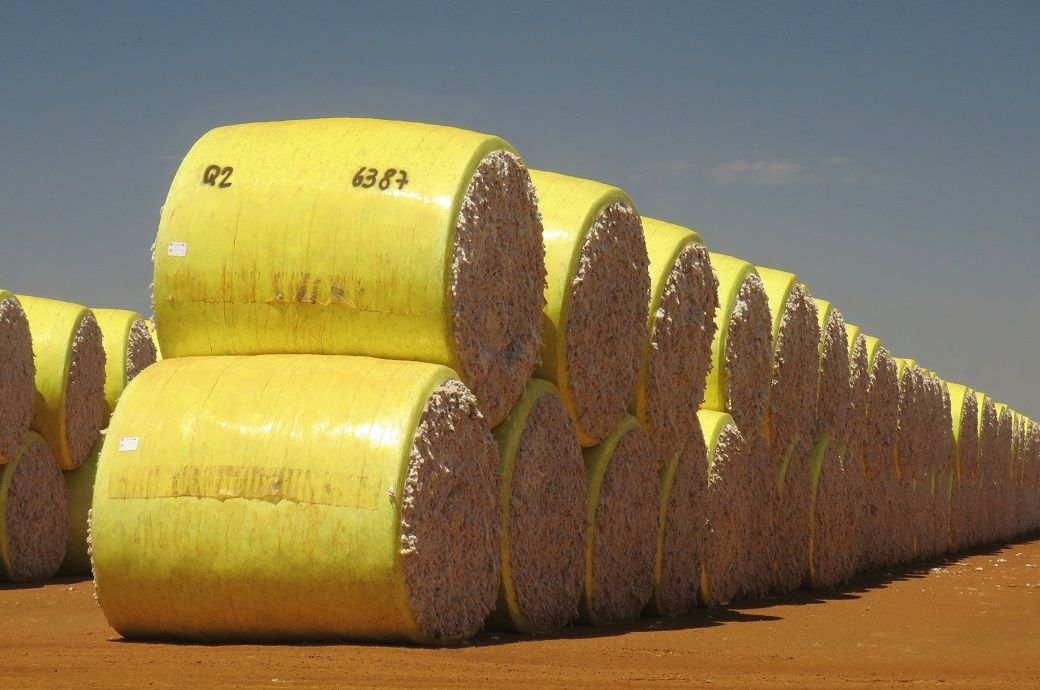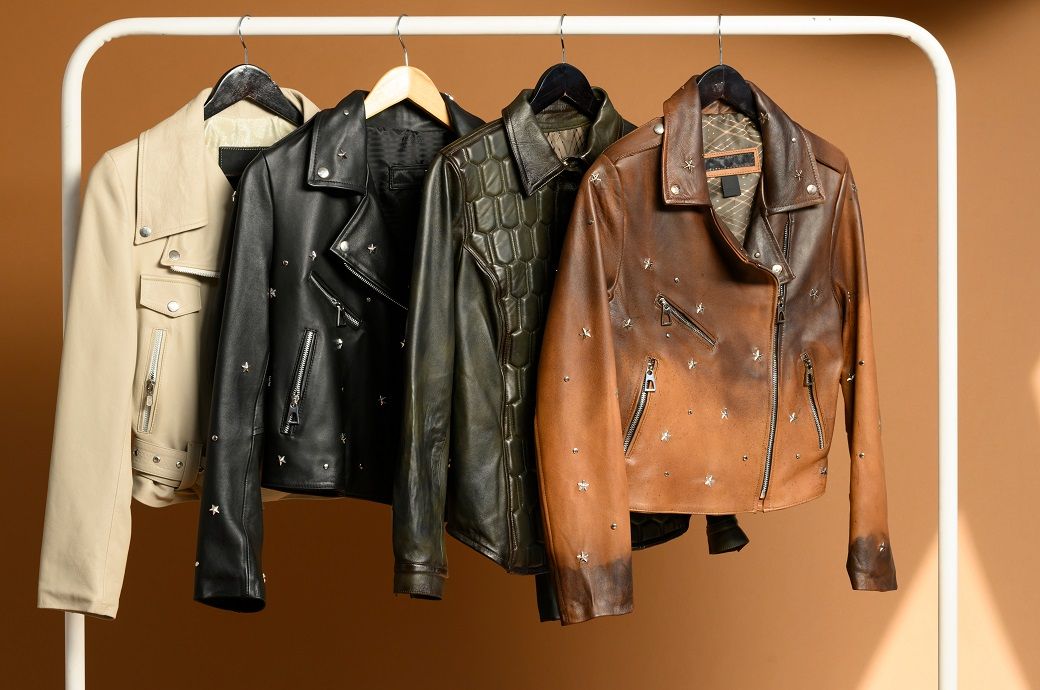Fashion
ICE cotton slips despite higher US exports, strong dollar

ICE’s most active December 2025 contract settled at 66.90 cents per pound (0.453 kg), down 0.35 cent or 0.52 per cent. The contract has lost a total of 78 points over the last two sessions. Other contracts also closed lower, with losses ranging from 19 to 67 points.
ICE cotton futures declined as a stronger dollar and weak grain markets pressured prices.
December 2025 contract settled at 66.90 cents per pound.
USDA export sales rose 44 per cent weekly but missed expectations, and shipments were poor.
USDA’s September WASDE report left cotton forecasts unchanged.
US equities hit record highs, while crude oil and soybean prices added further downside pressure.
Trading volume was 36,204 contracts, compared with 38,237 in the previous session. ICE deliverable No. 2 cotton contract stocks remained unchanged at 15,474 bags as of September 17.
The US dollar rose 0.6 per cent, marking its second consecutive higher close, though it remains near 3.5-year lows. A stronger dollar makes dollar-denominated commodities such as cotton more expensive for buyers using other currencies. Crude oil futures declined by $0.59 on the day of the Fed decision, adding further pressure on cotton prices.
The Federal Reserve announced a 25-basis-point rate cut, which had been widely anticipated.
USDA’s weekly export sales report for the week ending September 11 showed a net increase of 186,100 bales—44 per cent higher than the prior week and 13 per cent above the 4-week average.
CBOT soybean futures fell for the second consecutive day, weighed down by weaker soyoil prices. Soyoil futures also dropped for the second session, pressured by the US EPA’s unclear proposal on redistributing biofuel blending obligations under the small refinery exemption programme. Market analysts said grain market weakness and a strong dollar are weighing on cotton. While USDA’s export sales report was ‘decent’, it fell short of export targets and shipments were poor, signalling that export demand remains lacklustre despite some increase in sales.
USDA’s September World Agricultural Supply and Demand Estimates (WASDE) report kept forecasts unchanged for US cotton consumption, exports, and 2025-26 year-end stocks.
US equities moved higher, with all three major indices hitting new all-time highs both intraday and at close.
Currently, ICE cotton for December 2025 is trading at 66.83 cents per pound (down 0.07 cent), cash cotton at 64.90 cents (down 0.35 cent), the October 2025 contract at 65.50 cents (up 0.31 cent), the March 2026 contract at 68.74 cents (down 0.10 cent), the May 2026 contract at 70.14 cents (down 0.03 cent) and the July 2026 contract at 71.03 cents (down 0.05 cent). A few contracts remained at their previous closing levels, with no trading recorded today.
Fibre2Fashion News Desk (KUL)
Fashion
Dutch goods trade rises in H1 2025 despite weaker fuel exports: CBS

The total value of goods imported was 2 per cent higher than it was in the first half (H1) of 2024, CBS said in a press release.
In each month of Q1 2025, more goods were traded than in the same month of 2024. In April and May, trade was down from last year, but in June it was higher once again.
Dutch international trade in goods rose in the first half (H1) of 2025 compared with H1 2024, according to Statistics Netherlands (CBS).
Exports increased 1.9 per cent and imports 2 per cent YoY.
While mineral fuel trade declined, exports of other goods were largely stable or higher.
Trade with Belgium, France, and the UK weakened, whereas exports to Germany and the US and imports from China grew.
Imports and exports of mineral fuel declined in H1 2025: the import value was 11 per cent lower, while the export value was 15 per cent lower. In other product categories, exports were higher than the previous year or were down by less than those of mineral fuels.
There has been geopolitical turbulence around the world in recent months, and trade with certain neighbouring countries seems to have suffered particularly in the first half of 2025. The value of imports from Belgium and the United Kingdom was down, for instance, as was the value of exports to Belgium and France, added the release.
Exports to the Netherlands’ key trading partner, Germany, saw an increase, while imports from China rose 5 per cent YoY in the first half (H1) of 2025. Exports to the United States climbed 11 per cent, with the most notable growth occurring in February, March, and April.
Fibre2Fashion News Desk (SG)
Fashion
Michael Kors parent Capri Holdings’ revenue exceeds estimates at $856 million in Q2 FY26

Published
November 4, 2025
Michael Kors parent Capri Holdings’ revenue exceeded estimates and totalled $856 million in the second quarter of the 2026 financial year. The business’ net loss rose to $34 million, compared to net income of $42 million a year prior.
“We are encouraged by our second quarter results,” said the company’s chairman and CEO John D Idol in a release posted on the business’ website on November 4. “Trends continued to improve sequentially, which resulted in revenue, gross margin, and operating income exceeding our expectations. This performance demonstrates the progress we are making as we execute against our strategic initiatives to energise our fashion luxury houses.”
The business’ revenue dropped by 4.2% year on year in constant currency terms (-2.5% on a reported basis) and its loss from operations totalled $12 million in the quarter ending September 27. Capri Holdings’ gross profit totalled $522 million in the second quarter of the 2026 financial year and the reported gross margin was 61%, compared to $547 million and 62.3% a year prior. Tariffs negatively impacted the gross margin rate by approximately 130 basis points, according to the business, and a higher than anticipated effective tax rate versus its original guidance negatively impacted adjusted net income by $24 million.
Capri Holdings’ brand Michael Kors’ revenue decreased by 1.8% on a reported basis and 3.3% on a constant currency basis in the second quarter of the 2026 financial year, totalling $725 million. The label’s gross profit was $430 million in the second quarter, compared to $451 million a year earlier.
The business’ label Jimmy Choo’s revenue totalled $131 million in the past quarter, representing a year on year drop of 6.4% on a reported basis and 9.3% on a constant currency basis. The luxury brand’s gross profit was $92 million in the second quarter this fiscal, compared to $96 million in the second quarter of the 2025 financial year.
“With the Versace sale expected to close in our fiscal third quarter, we are now fully focused on the growth of our two iconic brands Michael Kors and Jimmy Choo,” said Idol. “We plan to use the proceeds of the sale to repay the majority of our debt, substantially strengthening our balance sheet and providing greater financial flexibility to both invest in our growth as well as return capital to shareholders in the future. Given the encouraging signs of stabilisation across our business and our planned reduction in debt levels, our Board of Directors has authorised a new $1 billion share repurchase program which the Company expects to begin implementing in fiscal 2027.”
In its outlook for the full 2026 financial year, Capri Holdings expects to see its total revenue sit in the range of $3.375 billion and $3.45 billion with an operating income of around $100 million. The business forecasts total revenue of $2.8 billion to $2.875 billion for the Michael Kors brand and $565 million to $575 million for Jimmy Choo for the full financial year.
Copyright © 2025 FashionNetwork.com All rights reserved.
Fashion
India restores import duty exemptions for leather export inputs

The exemptions had been discontinued on March ** this year as the government did not issue a fresh notification before the expiry of the previous one. As a result, duty exemptions were unavailable to Indian exporters from April until the new notification was issued on October **.
Under the latest notification, imports of materials including wet blue, crust, and finished leather; buckles, zips, soles, linings, and fittings will continue to enjoy Nil customs duty when used in the manufacture of leather garments, footwear, and accessories meant for export.
-

 Tech7 days ago
Tech7 days agoOpenAI says a million ChatGPT users talk about suicide
-

 Tech7 days ago
Tech7 days agoHow digital technologies can support a circular economy
-

 Tech7 days ago
Tech7 days agoUS Ralph Lauren partners with Microsoft for AI shopping experience
-

 Tech7 days ago
Tech7 days agoAI chatbots are becoming everyday tools for mundane tasks, use data shows
-

 Sports7 days ago
Sports7 days agoBilly Bob Thornton dishes on Cowboys owner Jerry Jones’ acting prowess after ‘Landman’ cameo
-

 Fashion1 week ago
Fashion1 week agoITMF elects new board at 2025 Yogyakarta conference
-

 Fashion1 week ago
Fashion1 week agoJapan’s textile trade shows strong apparel demand, weak yarn imports
-

 Fashion1 week ago
Fashion1 week agoTaiwan Textile Select showcases sustainable innovation at TITAS 2025

















